Other Insect Pest Control
Insect Control in Poole, Bournemouth and the surrounding areas.
BMS Pest Control offers a fast, effective and professional service at affordable prices to rid your home or business of all insect pests.
Our treatments are safe, clean and are carried out at a time that is convenient to you. We will be happy to answer any questions you may have and to offer help and advice.
In addition to the most common insect pests that have their own pages, some additional species that we deal with are listed here. There are too many to list them all here so if you think you may have a pest problem don’t hesitate in contacting us.
Booklice
Booklice (or ‘Psocids’) are tiny insects that are a fairly common pest in UK homes. They can be found in dry powdery foods such as flour and commonly in old books and papers. They feed on mould, fungi, dead insects, pollen and cereal and like hot, humid conditions so are frequently found in kitchens and bathrooms.
Often found in the bathrooms of fairly new properties, where they feed on the mould that grows on drying plaster.
Characteristics
1-2mm in length
Pale translucent to yellow/grey colouration
Treatment
Treatment consists of spraying affected areas with a residual insecticide spray or powder. Often the use of a dehumidifier may be need to achieve long term control.
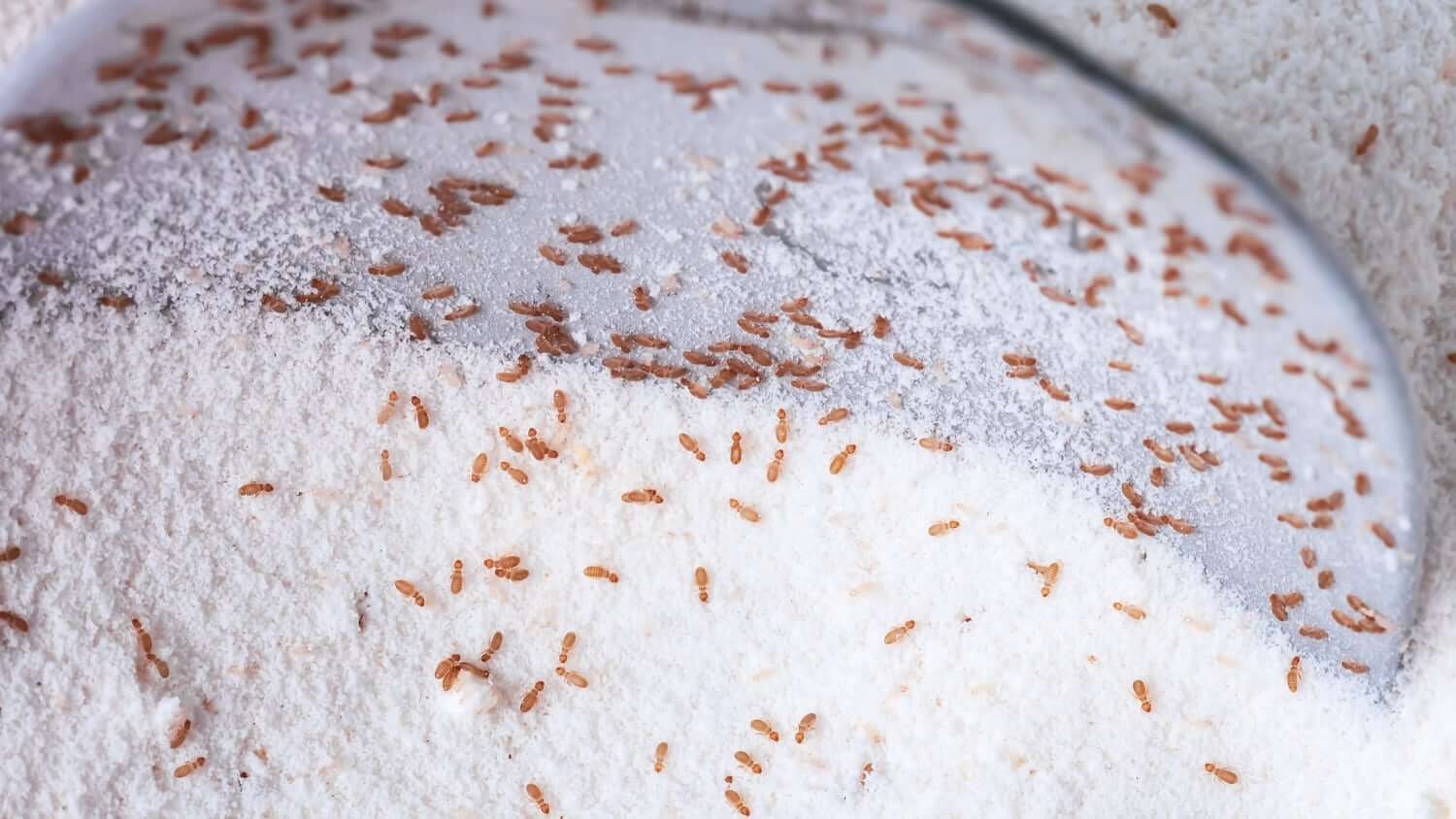
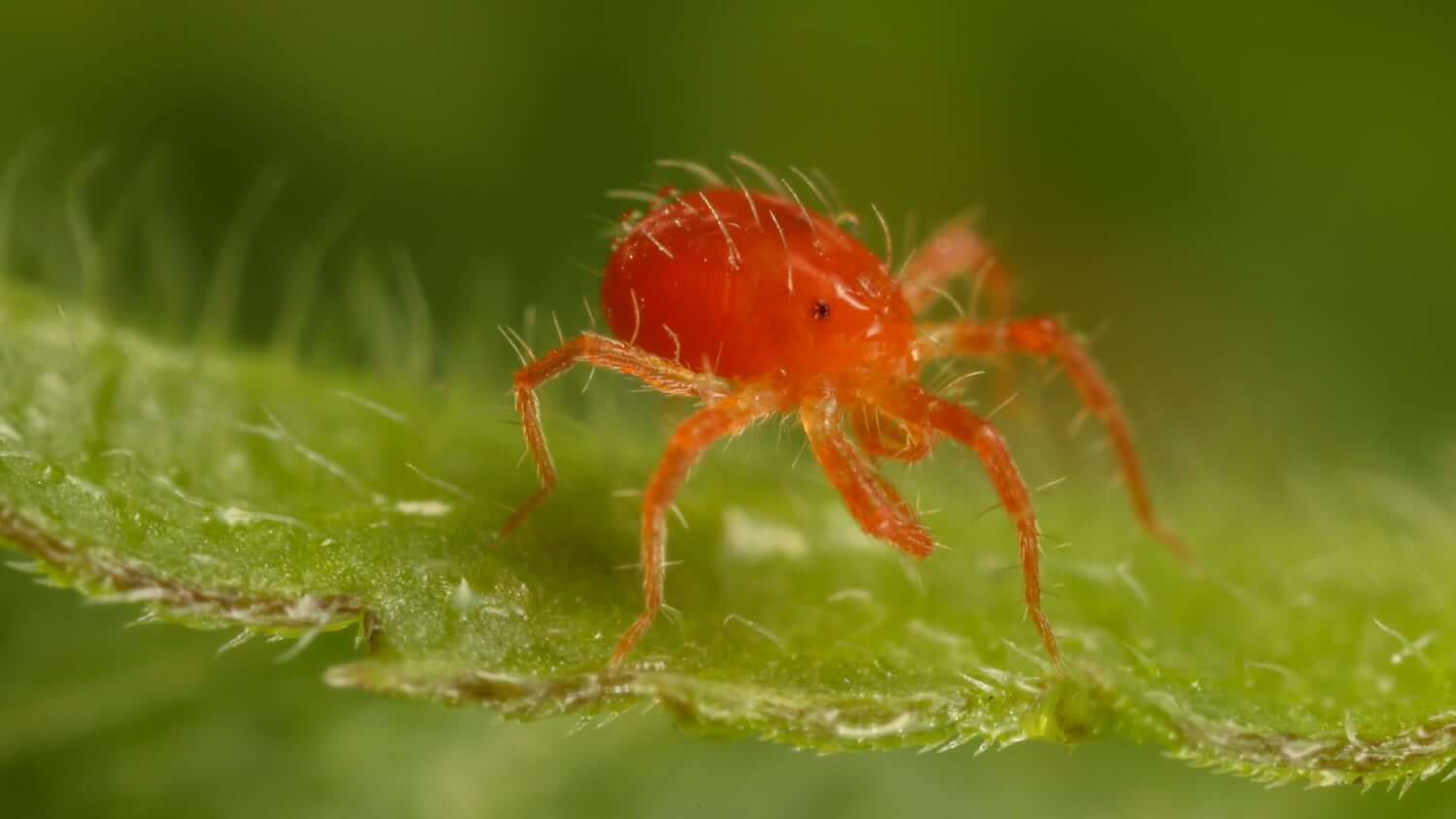
Mites
Even smaller than bookice, mites are tiny arachnids that are very difficult to see with the naked eye. A mite infestation will generally go unnoticed until they have reached very high numbers when they become more visible, looking more like a fine powder or dust covering contaminated items.
There are numerous species of mite including flour mites, cheese mites, clover mites and bird mites. Most species are too small to accurately identify without a microscope.
Most species are completely harmless except bird mites, which will bite humans, though all species of mite can contaminate food.
Bird mites can usually be traced back to a birds nest in the roof and the bright red clover mites come from plants. Most other species of mite are usually associated with dried goods such as cereals or microscopic mould, similar to booklice.
Characteristics
0.4-0.8mm in length depending on species
Bird mite - white/grey or black/red if they have fed.
Clover mites - Bright red.
Flour / cheese mite - white/cream pale brown colouration
Treatment
Treatment will consist of thorough cleaning and removal of contaminated items. Where mites are found in food cupboards it might be necessary to throw away everything that isn’t stored in airtight containers. A residual insecticide will then be used inside the cupboard to kill any remaining mites.
Where mites are associated with mould or damp, the use of a dehumidifier may also be necessary.
Need help identifying an insect pest?
Contact UsStored Product Insects
Rather than a specific type of insect, the term ’Stored Product Insect’ (or ‘SPI’) is a term used in the pest control industry to describe any insect pest that infests stored foods such as flour, cereals, wheat, rice, sugar, dried fruit, nuts, seeds, pasta, biscuits, herbs, spices and even tobacco.
They do not pose any significant health risk to humans but their presence in a kitchen can be very distressing. However, an SPI infestation in any kind of business that uses cereals, grains or dried foods is a serious problem and can lead to financial loss through contaminated products and loss of reputation.
Most SPIs are either small beetles or moths but the term also includes weevils and some mites.
What to look out for
Dead or alive insects in foodstuffs
Damaged foods or packaging
Holes in grains or seeds caused by insects burrowing into them.
Webbing caused by the larvae of moths.
Tracks caused by insects moving through dusty foods.
Insect droppings (known as ‘Frass’) found amongst stored goods
Treatment
Treatment will consist of locating and disposing of the source of the infestation. This is most likely a packet of dried food in a kitchen cupboard. You will also need to dispose of any other infested items. Affected areas will then be treated with a residual insecticide to eradicate any remaining adult and larval stages.
The residue left behind by the treatment will continue to kill off any larvae as they hatch from their eggs so we ask that customers do not clean/wash the treated areas for 2 weeks after the treatment.
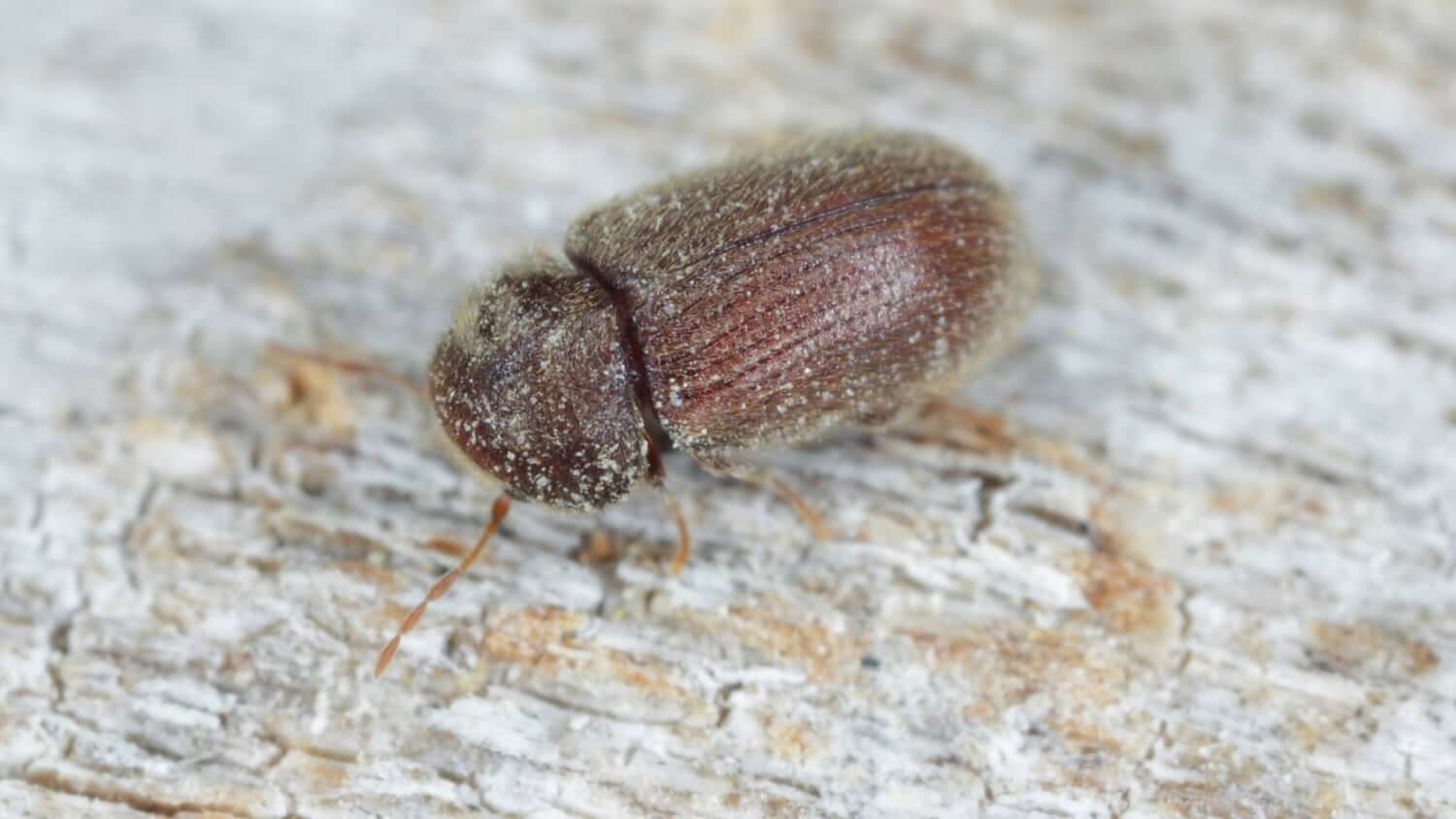
Biscuit Beetle
Common SPI species include:
Biscuit beetles
Grain weevils
Indian meal moths
Rice weevils
Confused flour beetles
Larder beetles
Mill moths
Saw toothed grain beetles
False Black Widow Spiders
While spiders are generally considered beneficial, they can sometimes invade homes in large numbers which can be very distressing, especially for people with phobias.
One species that can be problematic is the steatoda family of spiders, commonly referred to as the ‘false black widow spider’. While they do have a painful bite (similar to a wasp string), they are nowhere near as venomous as a black widow and are not aggressive.
They generally build their webs around window and door frames, around gutters and eaves, downpipes, porches, balconies and conservatories. They can also be found in sheds and garages.
False black widows are approximately the size of a 50p coin with a large bulbous abdomen and brown/cream colouration. They are similar in appearance to black widows, but are more brown rather than black and lack the famous red hourglass marking on the abdomen.
Treatment will consist of the removal of webs and the application of a residual insecticide spray to affected areas.
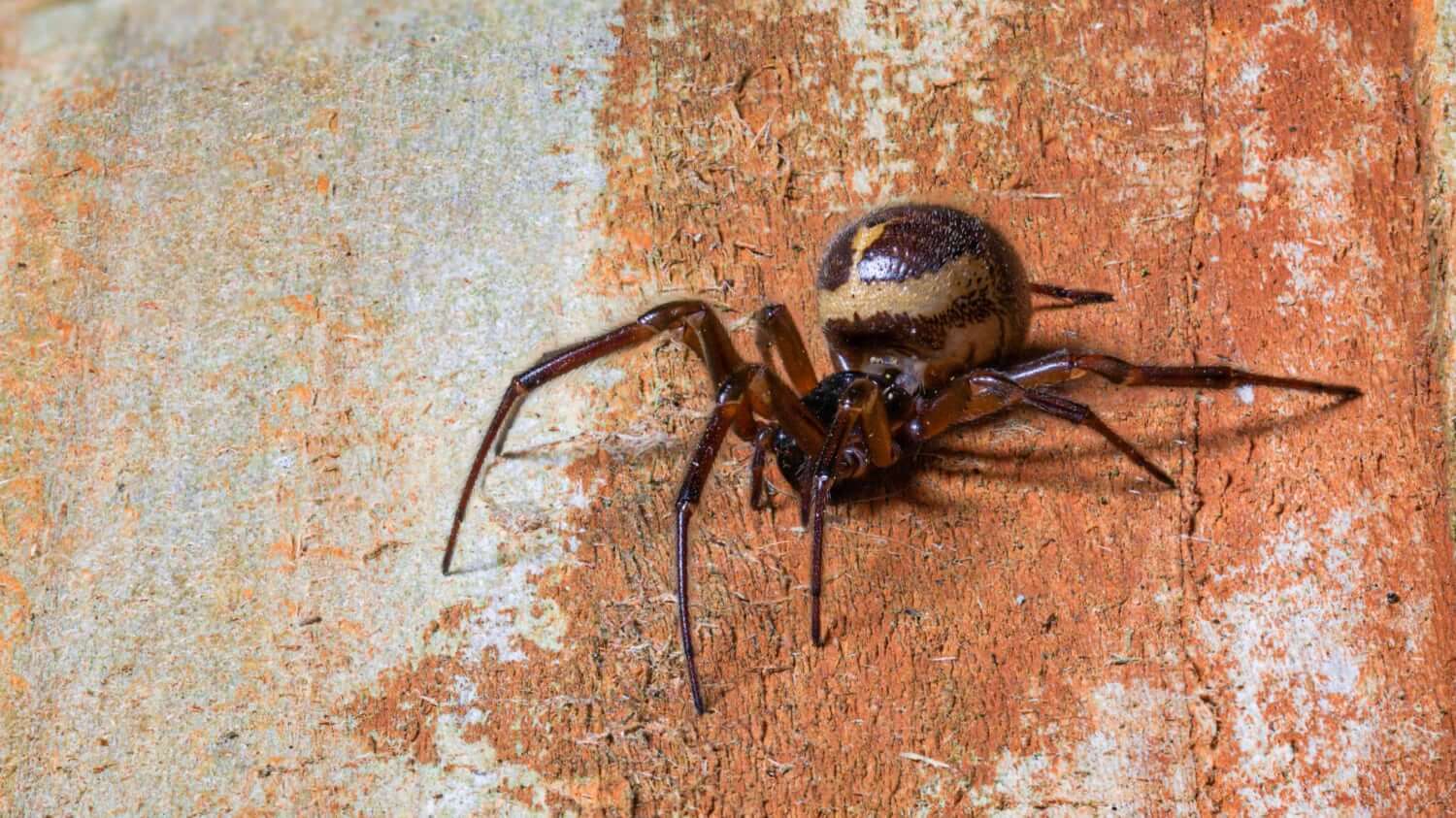
Ladybirds
Ladybirds can invade homes in the autumn as they look for somewhere warm to hibernate for winter, often clustering together in large numbers around window frames. While the larger harlequin ladybird does bite, this is very rare. More of a problem is the yellow fluid that they secrete as a defence mechanism. This secretion has an unpleasant smell and will stain paintwork, curtains and wallpaper.
A ladybird infestation can consist of a very large number of ladybirds and can be quite distressing.
Treatment will consist of the application of a residual insecticide spray around window and door frames and other affected areas. We may also use an ultra low volume (ULV) insecticide fog or an insecticide dust if they have got into void areas.
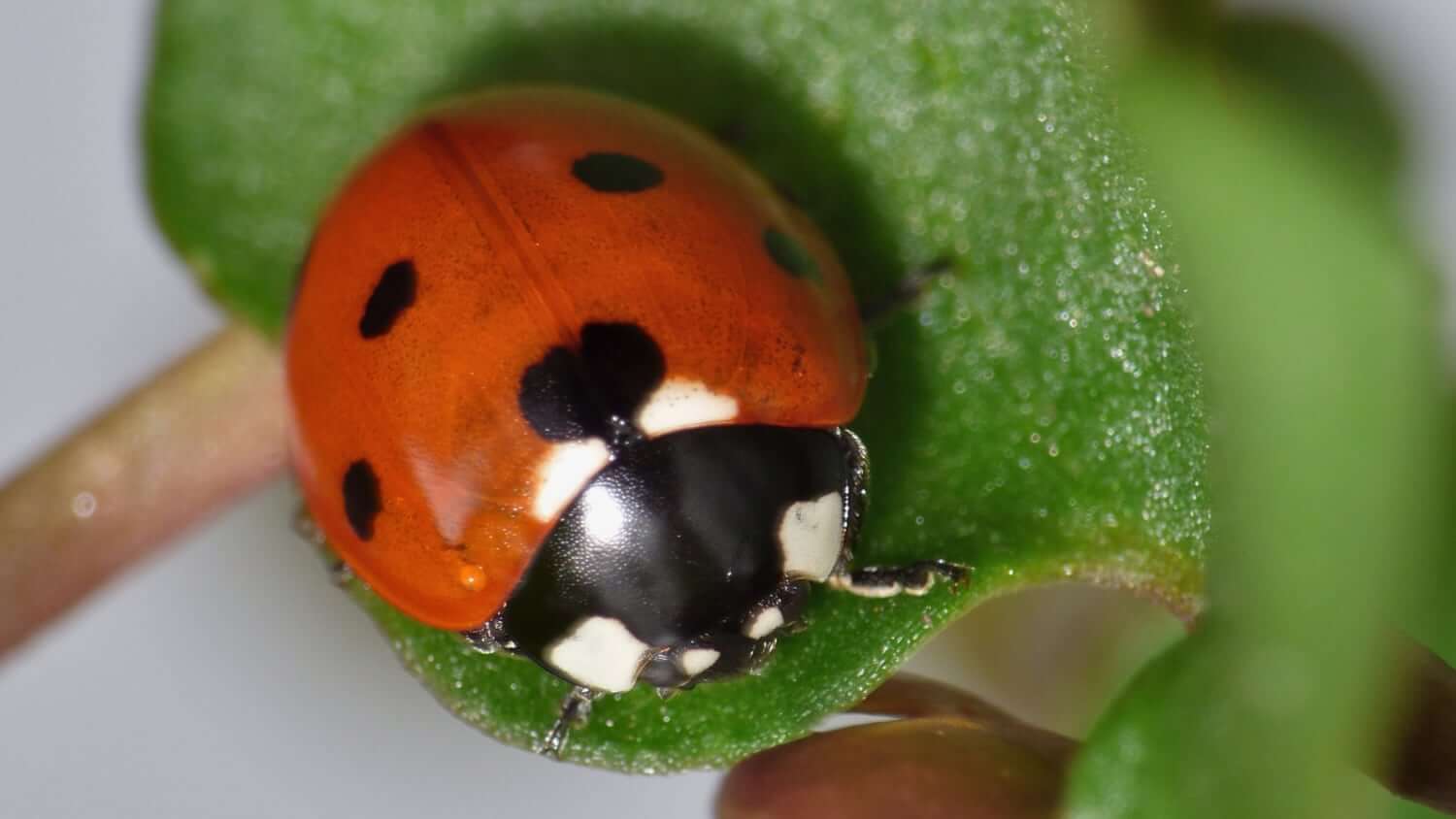
Insect Pests in Your Home or Business?
Frequently Asked Questions About Insects
While we have listed the most common insect pests, there are still many others. If you can send a photo of the insect, we’ll try and identify it for you.
Other Services
Areas Covered Include:
Blandford, Bournemouth, Christchurch, Dorchester, Poole, Ringwood, Salisbury, Swanage, The New Forest, Verwood, Wareham, Weymouth, Wimborne and other Dorset and Hampshire Areas.
Quick Links


© 2025 BMS Pest Control Contact Us:

